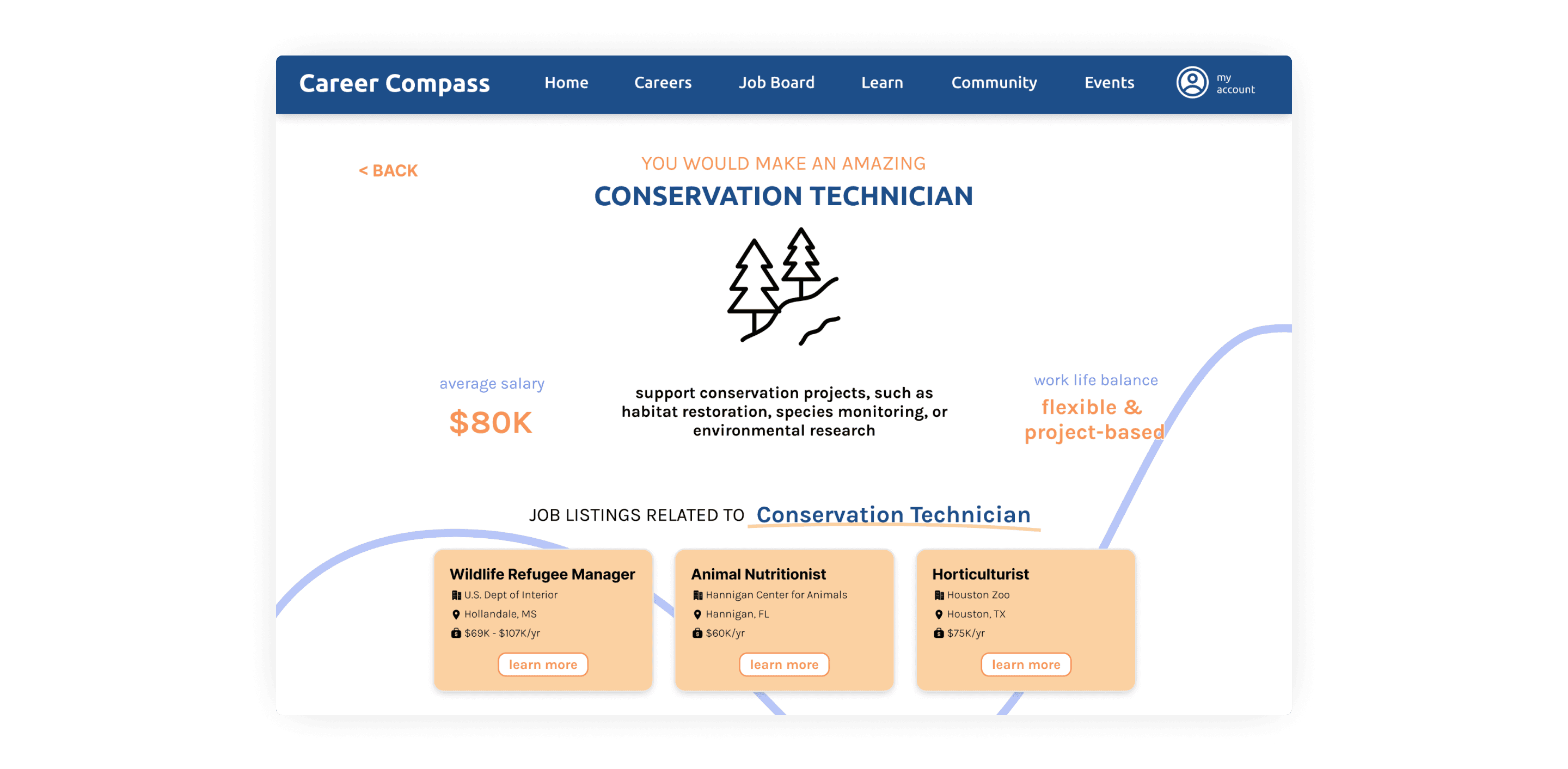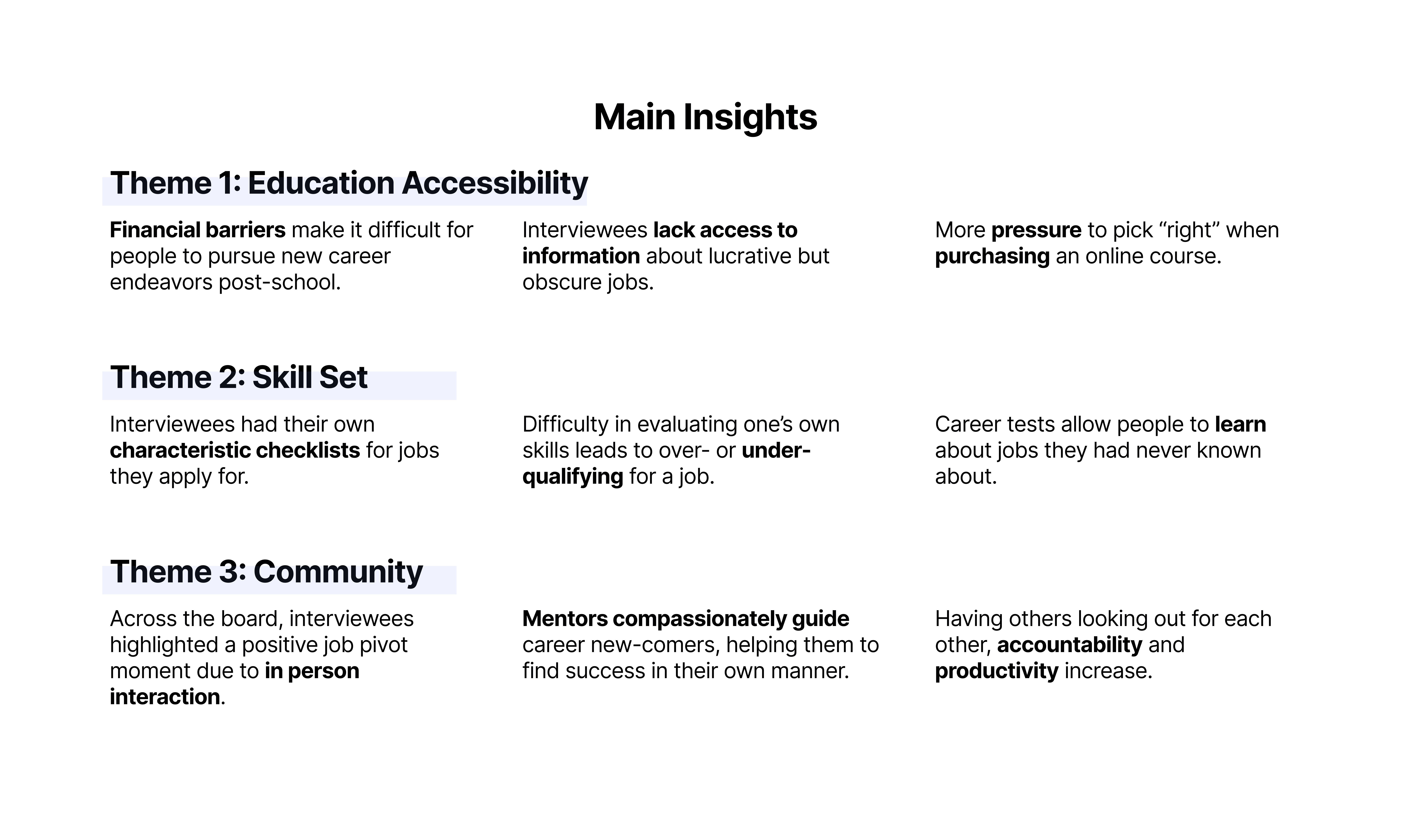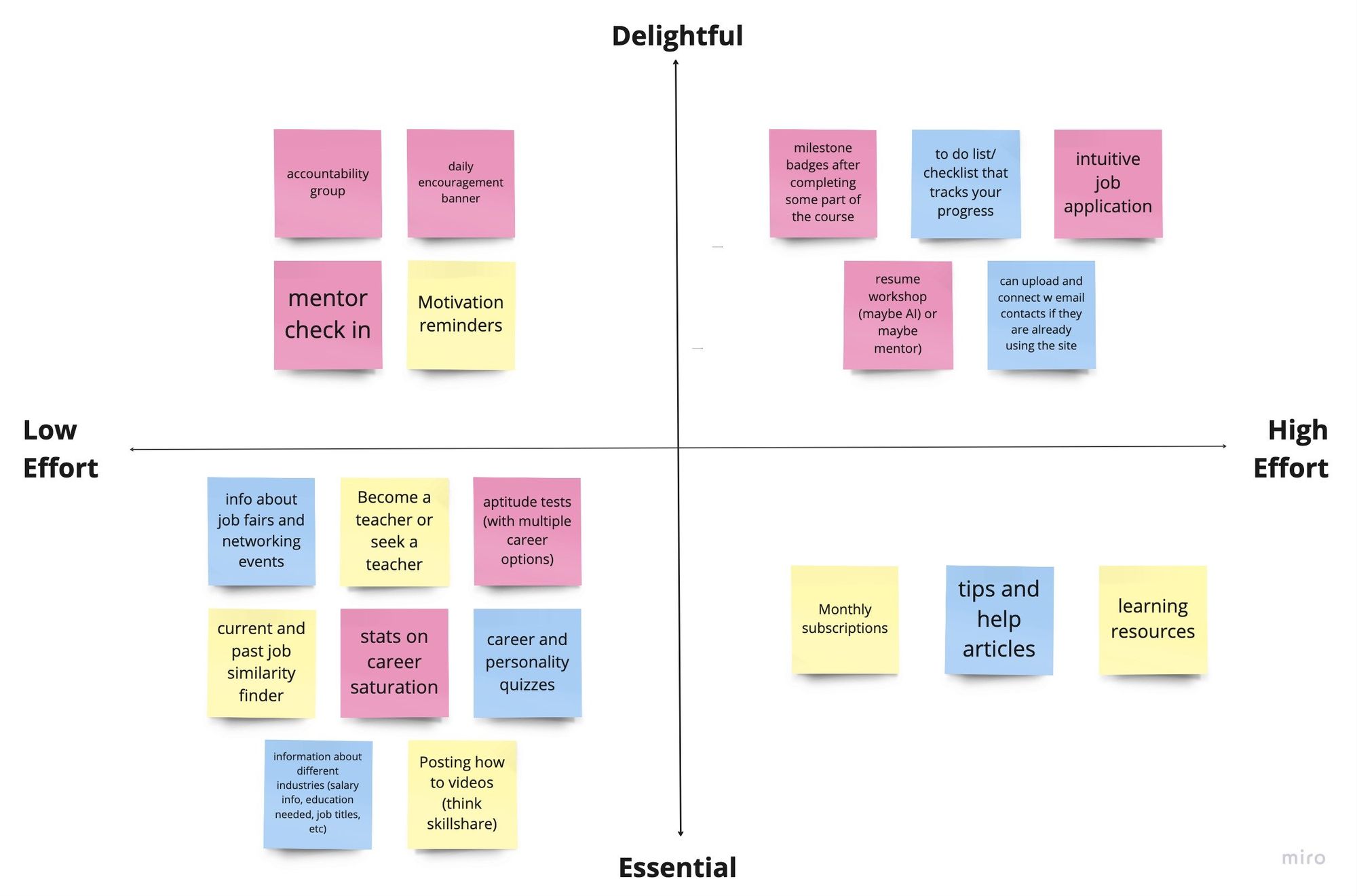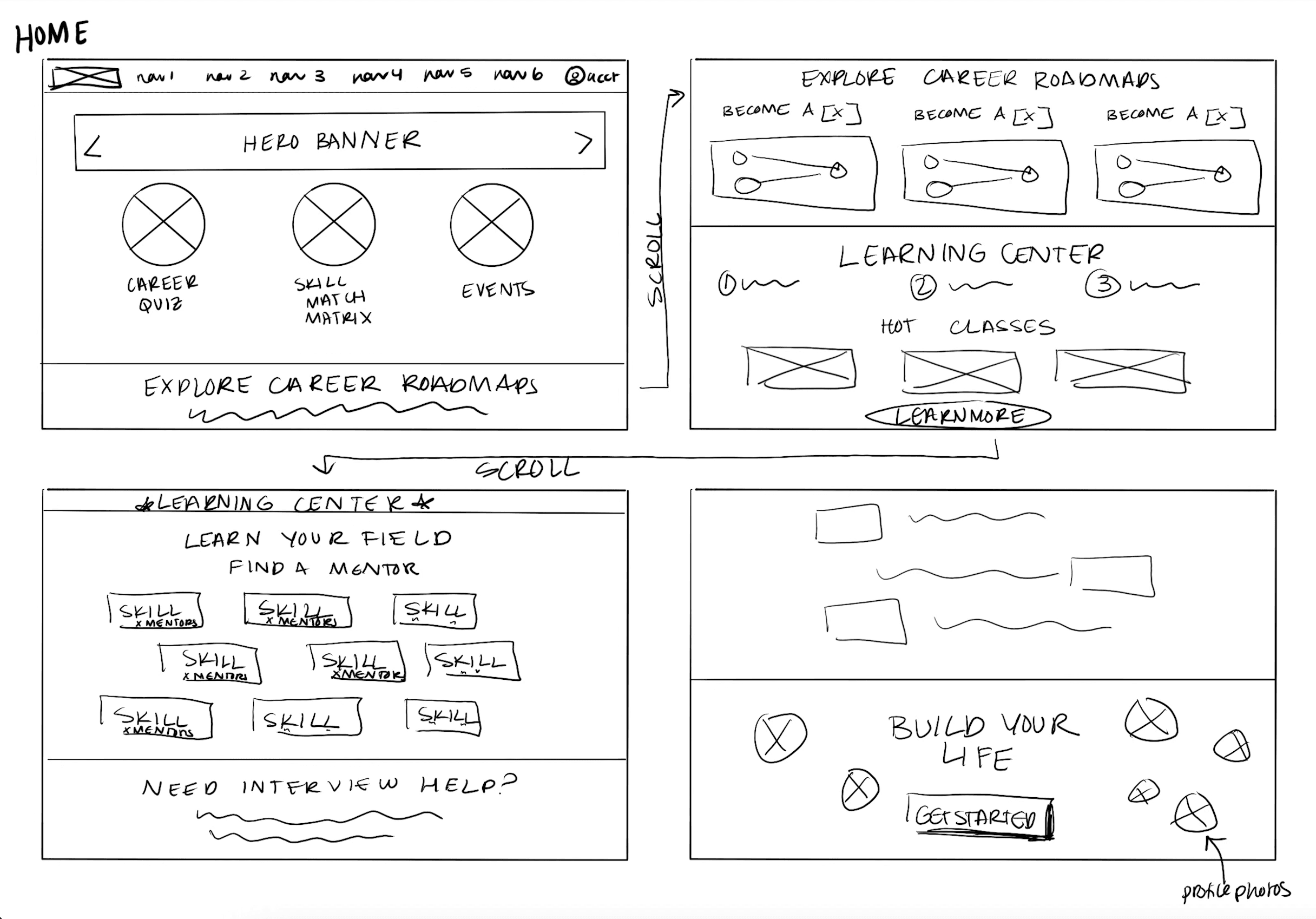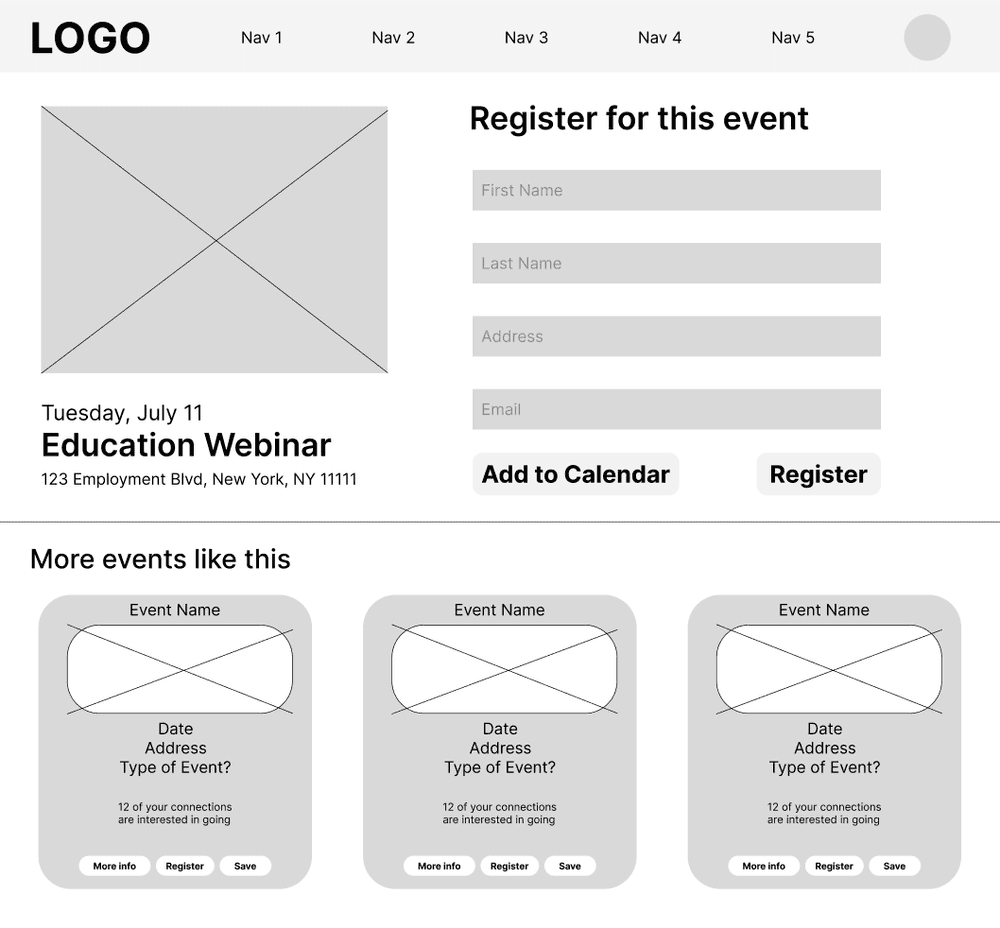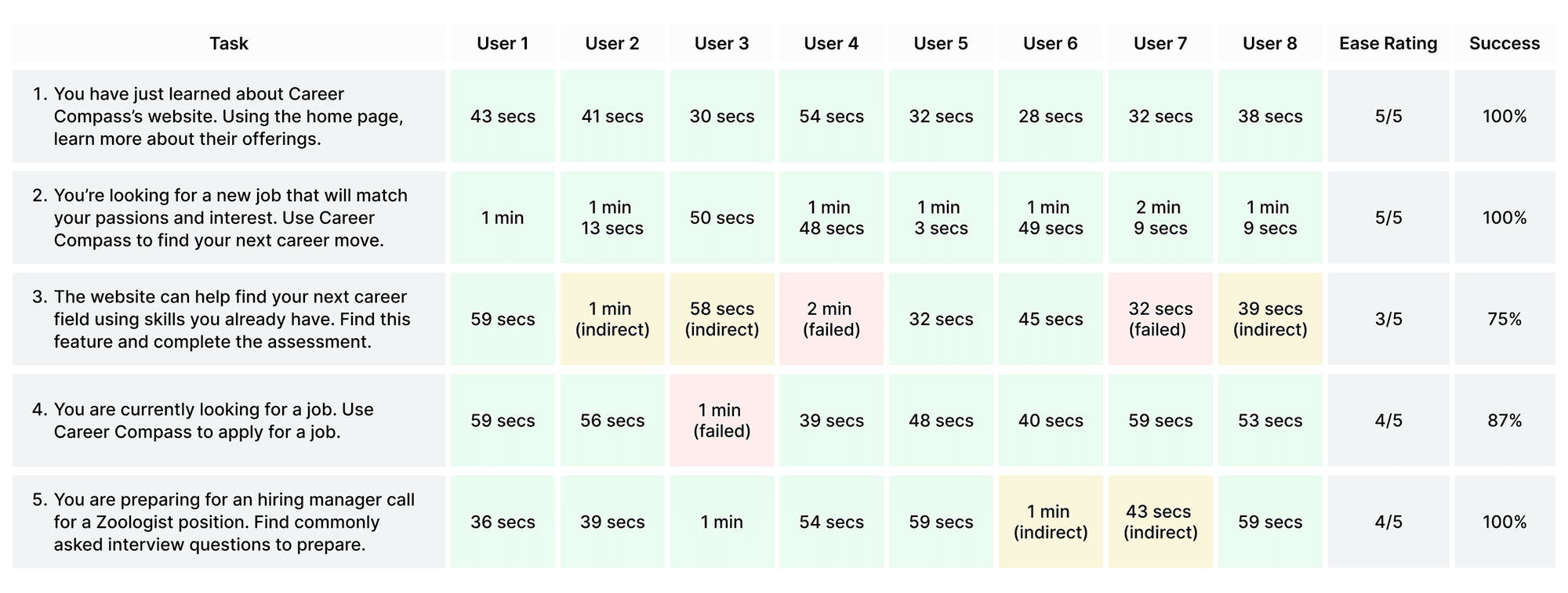
IN THIS PROJECT, WE WERE ASKED TO
help people discover dream careers by uncovering transferable skills and building mentorship communities
I partnered with a UX researcher and UI designer to build a career discovery platform from the ground up.
Career Compass is a web app designed to help users identify their skills, match with mentors, and explore career paths through curated courses—bridging the gap between ambition and access for people exploring new careers.
TIMELINE
6 Weeks
TEAM
Adriana - UI Designer
JJ - UX Researcher
MY ROLE
UX Designer
Project Manager
TOOLS
Figma
Miro
BACKGROUND
Breaking down career barriers with better tools and access
Career Compass was commissioned by OCTO, a tech department for the city of Washington, DC, whose mission is to improve digital access for city residents. Their vision: a user-friendly career platform that empowers users to break into new industries, especially those who have faced financial and educational barriers.
SKILLS ALIGNMENT TEST
ROLE
As project manager, I led daily stand-ups and drove alignment between design and research. I supported the UX lead in conducting interviews and usability tests, and helped shape UI decisions and final screens. I also handled coordination between roles, documented feedback, and led feature prioritization.
RESEARCH
COMPETITIVE ANALYSIS
We studied five platforms offering partial solutions—tools for job searching, mentorship, learning, or assessments—to identify what was missing and what our target users actually needed.
USER SURVEY
USER INTERVIEWS
We conducted 7 interviews with individuals across major cities (with similar economic barriers to DC residents) to gather deeper insights.
Interview Questions Included:
What challenges do you face when trying to align your skills and passions?
How confident are you in exploring new career paths?
What would help you pursue training or mentorship for a career change?
Key findings

PROBLEM STATEMENT
People seeking new career paths often face unclear direction, inefficient tools, and a lack of mentorship. Without better support, many remain stuck in unfulfilling jobs, unable to translate their existing strengths into new opportunities.
IDEATION
HOW MIGHT WE…
Turning pain points into opportunities
We synthesized our interview and usability testing data through affinity mapping to highlight key user needs and pain points. These insights shaped key features.
How might we help users discover careers that align with their skills and passions—without overwhelming them?
FEATURE PRIORITIZATION
To bring our solution into being, we had to decide which features we would prioritize. We handpicked features that our users needed and those that were favored in the screener survey and mentioned in interviews.
We decided our MVP, given the time constraints, would focus on the essential and low-effort quadrant of the graph.
Aptitude & Skills Tests: Self-assessments to help users uncover hidden strengths
Mentor Matching: A database of professionals willing to support career changers
Curated Learning Hub: Courses and resources personalized to each user’s path
DESIGNING
SKETCHING
In our early design sprints, we mapped out key features and flows using lo-fi sketches. We focused on modularity and clear calls-to-action to guide users through the experience.
MID-FIDELITY
As we built the interface, we tested core features like the learning hub, registration flow, and skills alignment tool to ensure clarity and ease of use.
TESTING
USABILITY TESTING
We conducted usability testing with 8 participants—ranging from recent grads to mid-career professionals exploring change. Our goal: identify friction points and gather feedback on overall usability.
Key findings
Users were confused by overlapping terminology in the skills and aptitude sections
Mentor matching needed more clarity and filters
Participants appreciated progress tracking, but wanted more encouragement through the process
FINAL DESIGNS
LEARNING HUB
JOB SIMILARITY MATRIX
REFLECTION
Leading this project deepened my appreciation for accessible design and the power of research-backed systems. I learned how to prioritize features under time constraints and translate user needs into scalable solutions—especially for users who feel underserved by traditional tools.
FUTURE IMPROVEMENTS
Conduct deeper research with non-college-educated users
Refine assessment flows and tailor content based on real feedback
Test mentor matching filters and onboarding process
Is this love at first site?
Let's Connect
© Chaise Jones 2025

